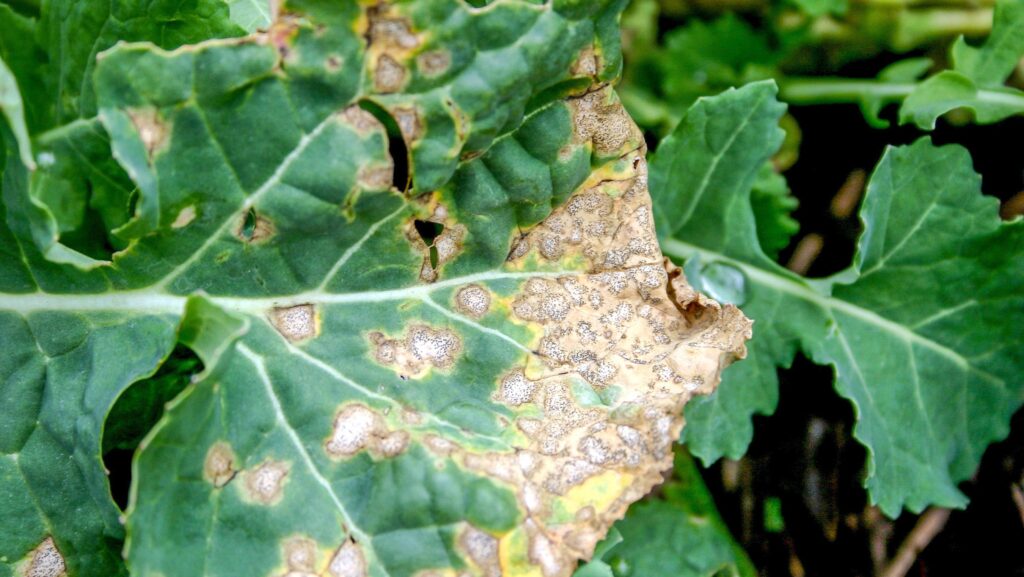Phoma resistance to azole fungicides found in western Europe
 © Blackthorn Arable
© Blackthorn Arable UK scientists have for the first time detected azole resistance in western European species of a fungus that causes one of the most important diseases in oilseed rape, sparking concerns over the most widely used fungicide for the disease.
Phoma leaf spot and stem canker in oilseed rape are caused by two fungal species, Plenodomus lingam (Leptosphaeria maculans) and P biglobosus (L biglobosa), which result in yield reductions of between 5% and 50%.
In the UK alone, phoma is estimated to cause about £100m in yield losses each year – despite the use of costly fungicides.
See also: How YEN prize winners have achieved impressive OSR yields
In Europe, farmers use a range of fungicides to control the disease, but azoles, which act as inhibitors for a fungal enzyme, are fast becoming ineffective. In the UK in 2022, azoles were the most applied fungicides used on OSR crops (prothioconazole and/or tebuconazole), with the total area treated being about 536,000ha. This compares with strobilurins (azoxystrobin) at about 137,000ha, while SDHIs are less commonly used.
Dr Kevin King, plant pathologist at Rothamsted Research who led the research, said: “Decreased sensitivity has already emerged in Australian and eastern European P lingam populations.
“However, we are now seeing it in western Europe, which is very worrying.”
The study was based on in vitro sensitivity testing. Decreased azole sensitivity was found in modern western European P lingam isolates (collected in 2022-23) compared with baseline historical (1992-2005) isolates.
The genetic sequence identified as responsible for the change was associated with a three- to tenfold decrease in sensitivity to the azoles tested.
In contrast to P lingam, however, the same genetic sequences were absent in modern western European P biglobosus isolates (2021-23).
Dr King says the good news is that to date, there is no evidence that sensitivity to other control agents is changing for either species.
So other fungicides such as strobilurins (pyraclostrobin) or SDHI (boscalid) should remain effective for now.
However, he warns that relying too heavily on a smaller arsenal of chemicals may well generate more instances of resistance developing in future.
“More integrated pest control options that incorporate biological agents and different approaches to cultivation and cropping should be explored,” he says.
The research was funded by the Biotechnology and Biological Sciences Research Council under the Growing Health and Resilient Farming Futures strategic research programmes.

